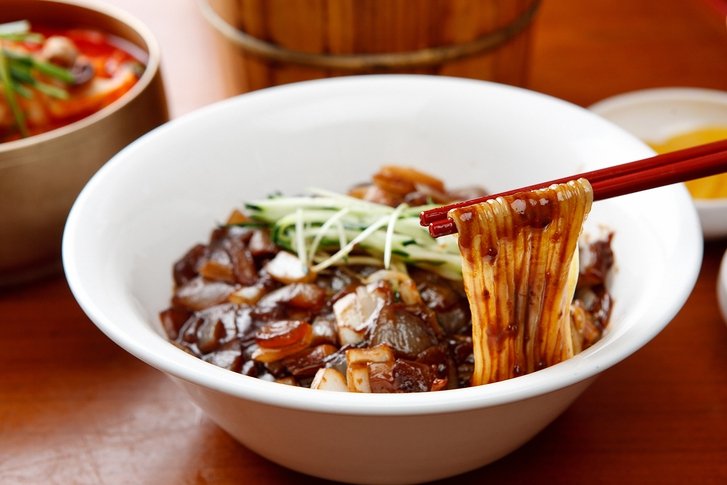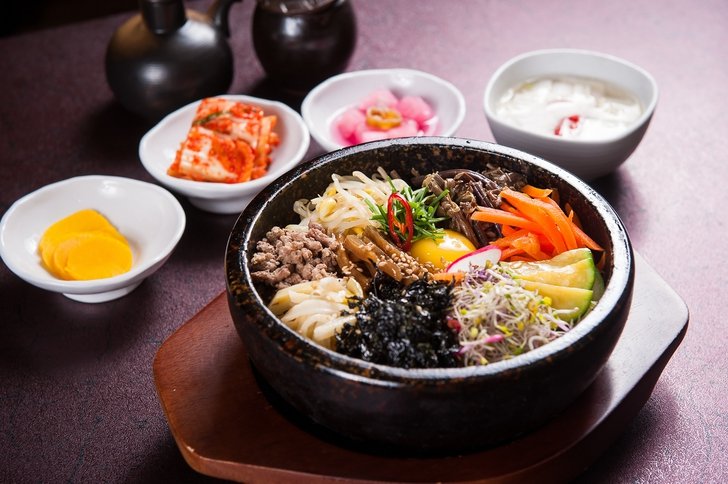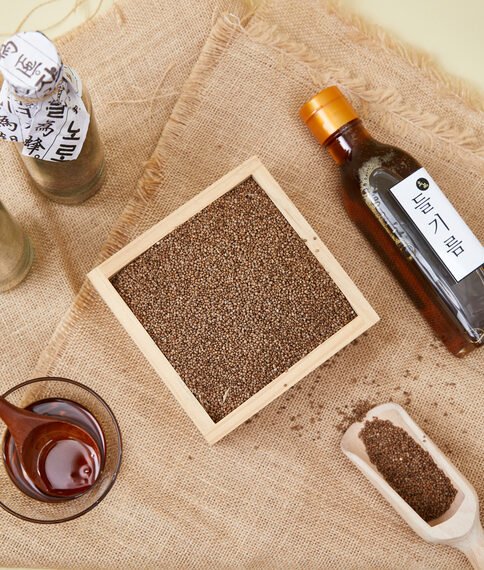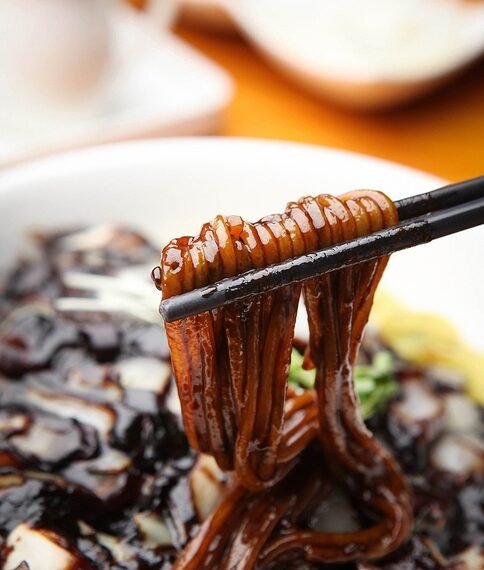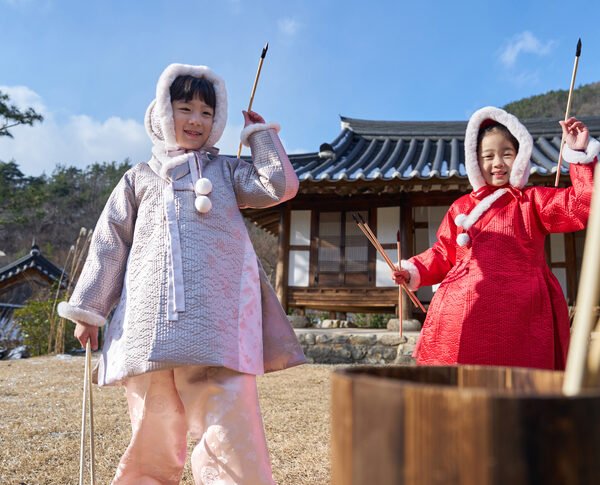Easy and Delicious Korean Recipes! If you’re a fan of Korean cuisine or simply looking to expand your cooking repertoire, there are several popular South Korean dishes that you can easily make at home. From Japchae, a flavorful dish of stir-fried glass noodles and vegetables, to Bibimbap, a rice dish that you can customize with your favorite toppings, these dishes are sure to satisfy any craving. And let’s not forget about the crispy and delicious Korean fried chicken, or the comforting Sundubu-jjigae, made with soft tofu. With these recipes, you can bring the flavors of South Korea into your own kitchen and impress your friends and family with your culinary skills. So put on your apron and get ready to explore the vibrant and delicious world of South Korean cuisine.

Japchae, Korean Recipe
Japchae is a popular dish in Korean cuisine that is both savory and slightly sweet. It is made with stir-fried glass noodles and an assortment of colorful vegetables. The dish gets its sweetness from the soy sauce-based marinade that the noodles and vegetables are cooked in. Japchae is often served as a side dish or as a main course.
Ingredients
To make japchae, you will need the following ingredients:
- Glass noodles (also known as sweet potato noodles)
- Assorted vegetables such as carrots, spinach, bell peppers, and mushrooms
- Soy sauce
- Sesame oil
- Garlic
- Sugar
- Salt
- Cooking oil
Preparation
To prepare japchae, start by boiling the glass noodles until they are cooked al dente. Rinse them under cold water to prevent them from sticking together. In a separate pan, stir-fry the vegetables with garlic and oil until they are tender. Once the vegetables are cooked, add the cooked noodles to the pan and mix them together. Finally, add the soy sauce, sesame oil, sugar, and salt to the pan and toss everything together until well combined.
Variations
There are many variations of japchae that you can try. Some popular additions include thinly sliced beef or pork, which can be cooked along with the vegetables. You can also add sesame seeds for extra flavor and crunch. Another variation is to use different types of noodles, such as wheat noodles or rice noodles, instead of the traditional sweet potato noodles. Feel free to experiment with different ingredients and flavors to make japchae your own!
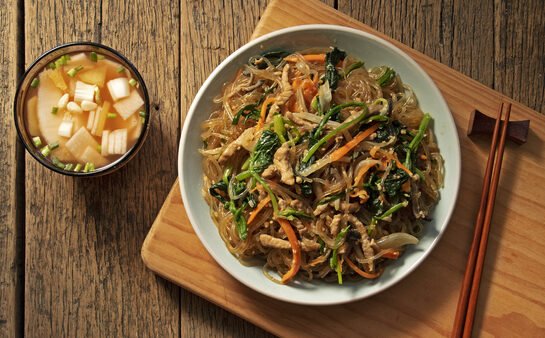
Bibimbap, Korean Recipe
Bibimbap is a classic Korean rice dish that is known for its vibrant colors and diverse flavors. The name “bibimbap” translates to “mixed rice,” which perfectly describes the dish. It is made with a bed of steamed rice topped with various vegetables, meat, and a fried egg. The ingredients are arranged in separate sections on the rice, and the dish is traditionally served with a spicy gochujang sauce.
Ingredients
To make bibimbap, you will need the following ingredients:
- Steamed rice
- Assorted vegetables such as carrots, spinach, bean sprouts, and mushrooms
- Thinly sliced beef or pork
- Eggs
- Gochujang (Korean chili paste)
- Sesame oil
- Garlic
- Soy sauce
- Sugar
- Salt
- Cooking oil
Preparation
To prepare bibimbap, start by sautéing the vegetables and meat separately with garlic, soy sauce, and sesame oil. Cook them until they are tender and well seasoned. In a large bowl, place a serving of steamed rice and arrange the cooked vegetables and meat on top in separate sections. Fry an egg and place it on top of the rice. Finally, drizzle some gochujang sauce over the ingredients and mix everything together before eating.
Variations
Bibimbap is a versatile dish that can be customized to suit your taste preferences. You can choose any combination of vegetables and meat that you like. Some popular variations include using seafood instead of meat, or even going vegetarian by using tofu as a protein source. You can also add toppings such as sesame seeds, sliced cucumbers, or kimchi for added flavor and texture. Get creative and have fun experimenting with different ingredients to create your perfect bibimbap!
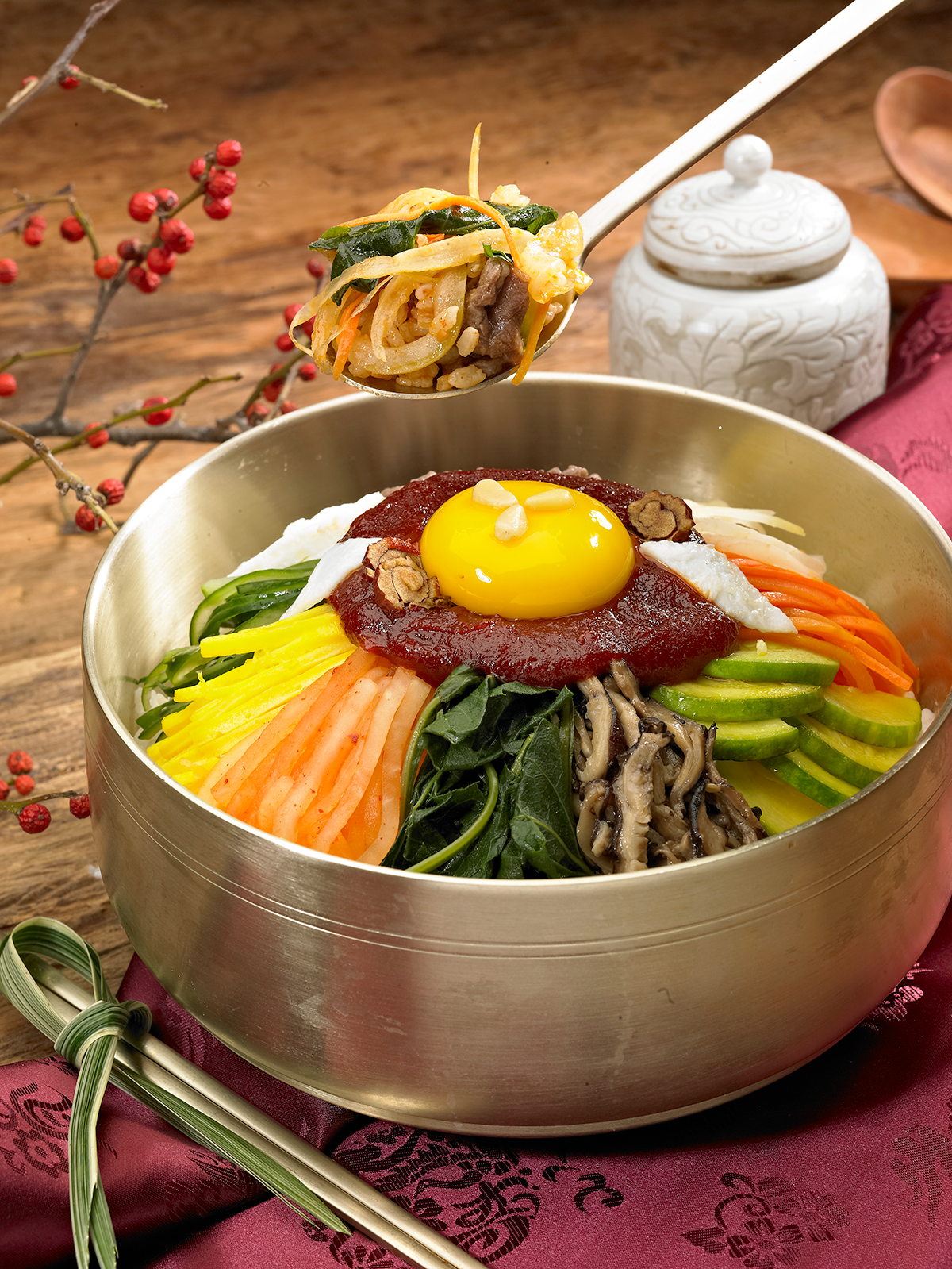
Pajeon, Korean Recipe
Pajeon is a savory Korean pancake that is made with scallions as its prominent ingredient. The word “pa” in Pajeon means scallion. The pancake batter is made with a combination of eggs, wheat flour, rice flour, and scallions. Pajeon is a popular dish in Korea and is often enjoyed as a snack or as an appetizer.
Ingredients
To make Pajeon, you will need the following ingredients:
- All-purpose flour
- Rice flour
- Eggs
- Water
- Scallions (green onions)
- Salt
- Cooking oil
Preparation
To prepare Pajeon, start by whisking together the all-purpose flour, rice flour, eggs, water, and salt to make the pancake batter. The batter should be smooth and slightly thick. Next, thinly slice the scallions and add them to the batter, mixing them in evenly. Heat a large skillet or non-stick pan over medium heat and add a generous amount of cooking oil. Pour a ladleful of the pancake batter onto the pan and spread it out to form a thin pancake. Cook until the bottom is golden brown, then flip it over and cook the other side until golden brown as well. Repeat this process with the remaining batter.
Variations
Pajeon can be customized with different ingredients to add variety and flavor. Some popular additions include seafood such as shrimp or squid, or even kimchi for a spicy twist. You can also add other vegetables such as carrots or zucchini to the batter to make it more colorful and nutritious. Pajeon is a versatile dish that allows you to get creative and experiment with different flavors and textures.
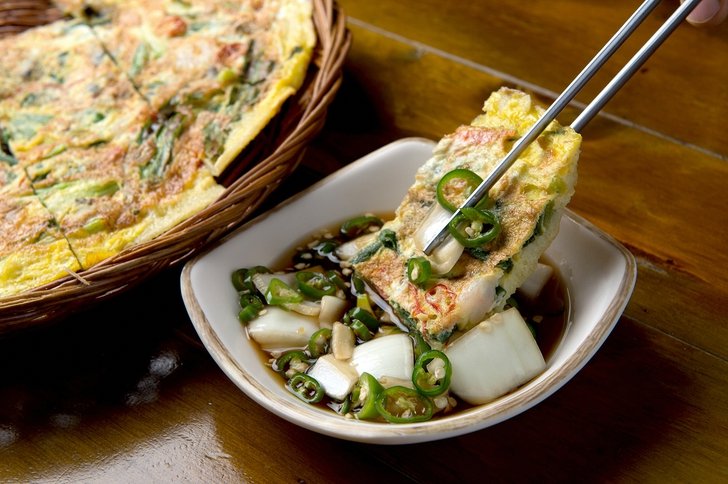
Kimchi, Korean Recipe
Kimchi is a traditional Korean dish that is a staple in Korean cuisine. It is a type of banchan, which refers to small side dishes that are served alongside the main course. Kimchi is made by fermenting vegetables, most commonly napa cabbage or Korean radish, with salt and a variety of seasonings. It is known for its tangy and spicy flavor, as well as its vibrant red color.
Ingredients
To make kimchi, you will need the following ingredients:
- Napa cabbage or Korean radish
- Garlic
- Ginger
- Korean red pepper flakes (gochugaru)
- Fish sauce or salted shrimp
- Sugar
- Salt
Preparation
To prepare kimchi, start by cutting the napa cabbage or Korean radish into bite-sized pieces. Sprinkle salt over the vegetables and let them sit for a few hours to draw out the excess moisture. Rinse the vegetables and squeeze out any remaining liquid. In a separate bowl, mix together the garlic, ginger, Korean red pepper flakes, fish sauce or salted shrimp, sugar, and salt to make a spicy paste. Coat the vegetables with the paste, making sure each piece is well coated. Place the kimchi in a sealed container and let it ferment at room temperature for a few days to develop its signature flavor. Once it has reached your desired level of fermentation, refrigerate it to slow down the fermentation process.
Variations
Kimchi can be made with a variety of vegetables, and you can customize it to suit your taste preferences. Some popular variations include using radishes, cucumbers, or even fruits such as watermelon or pineapple. You can also adjust the level of spiciness by adding more or less Korean red pepper flakes. Kimchi is a versatile dish that allows you to get creative and experiment with different flavors and textures.
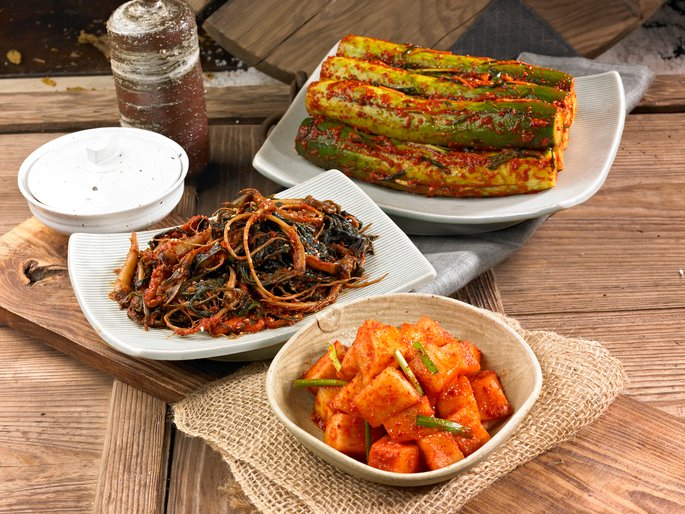
Sundubu-jjigae, Korean Recipe
Sundubu-jjigae is a popular Korean stew that is made with extra soft tofu. The dish is known for its silky smooth texture and rich flavors. Sundubu-jjigae is typically made with a spicy broth that is flavored with gochujang (Korean chili paste) and gochugaru (Korean chili flakes), along with a variety of vegetables and proteins.
Ingredients
To make Sundubu-jjigae, you will need the following ingredients:
- Extra soft tofu (sundubu)
- Assorted vegetables such as mushrooms, zucchini, and onions
- Protein of choice such as beef, pork, or seafood
- Garlic
- Gochujang (Korean chili paste)
- Gochugaru (Korean chili flakes)
- Soy sauce
- Salt
- Cooking oil
- Water or broth
Preparation
To prepare Sundubu-jjigae, start by sautéing the garlic and vegetables in a large pot with cooking oil until they are tender. Add the protein and cook until it is cooked through. Next, add the water or broth to the pot along with the gochujang, gochugaru, soy sauce, and salt. Bring the mixture to a boil, then reduce the heat and simmer for a few minutes to allow the flavors to meld together. Finally, gently add the extra soft tofu to the pot and simmer for a few more minutes until heated through.
Variations
Sundubu-jjigae can be customized with different vegetables and proteins to suit your taste preferences. Some popular additions include clams, shrimp, or beef. You can also adjust the level of spiciness by adding more or less gochujang and gochugaru. Sundubu-jjigae is a versatile dish that allows you to get creative and experiment with different flavors and textures.
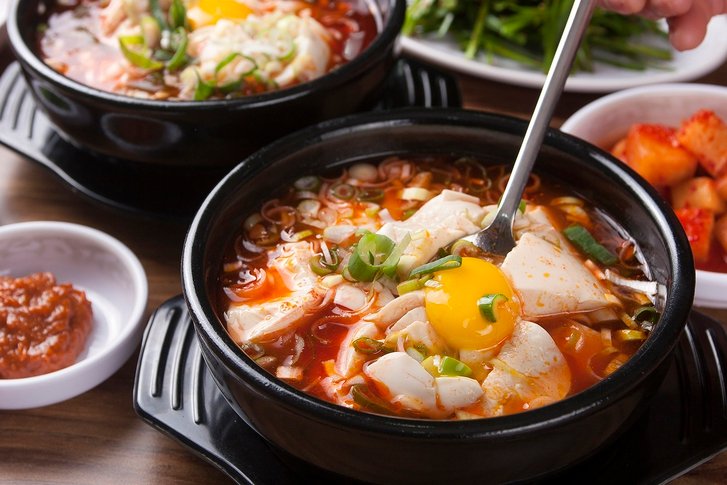
Tteokbokki, Korean Recipe
Tteokbokki, also known as simmered rice cake, is a popular Korean street food. It is made with small-sized rice cakes called tteokmyeon, which are usually cylindrical in shape. The rice cakes are cooked in a spicy sauce made with gochujang, soy sauce, sugar, and other seasonings. Tteokbokki is known for its chewy texture and spicy flavor.
Ingredients
To make Tteokbokki, you will need the following ingredients:
- Tteokmyeon (small-sized rice cakes)
- Gochujang (Korean chili paste)
- Soy sauce
- Sugar
- Garlic
- Gochugaru (Korean chili flakes)
- Fish cakes
- Green onions
- Sesame oil
- Water
Preparation
To prepare Tteokbokki, start by soaking the rice cakes in cold water for about 30 minutes to soften them. In a separate pot, combine the gochujang, soy sauce, sugar, garlic, gochugaru, and water to make the spicy sauce. Bring the sauce to a boil, then add the rice cakes and fish cakes to the pot. Simmer the mixture for about 10 minutes, or until the rice cakes are tender. Stir in the green onions and sesame oil just before serving.
Variations
Tteokbokki can be customized with different ingredients to suit your taste preferences. Some popular additions include boiled eggs, cabbage, or cheese. You can also adjust the level of spiciness by adding more or less gochujang and gochugaru. Tteokbokki is a versatile dish that allows you to get creative and experiment with different flavors and textures.
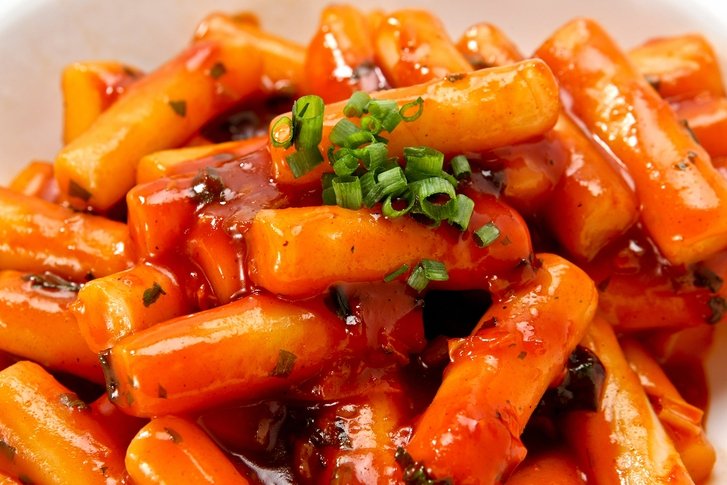
Korean Fried Chicken, Korean Recipe
Korean Fried Chicken, often referred to as chikin in Korea, is a popular dish that has gained international recognition. It refers to a variety of fried chicken dishes created in South Korea, including the basic huraideu-chicken and spicy yangnyeom chicken. Korean Fried Chicken is known for its crispy texture and bold flavors.
Ingredients
To make Korean Fried Chicken, you will need the following ingredients:
- Chicken wings or chicken pieces
- Cornstarch
- Flour
- Baking powder
- Salt
- Pepper
- Soy sauce
- Garlic
- Ginger
- Sugar
- Rice vinegar
- Gochujang (Korean chili paste)
- Gochugaru (Korean chili flakes)
- Cooking oil
Preparation
To prepare Korean Fried Chicken, start by coating the chicken pieces in a mixture of cornstarch, flour, baking powder, salt, and pepper. Deep fry the chicken until it is golden brown and crispy. In a separate bowl, combine the soy sauce, garlic, ginger, sugar, rice vinegar, gochujang, and gochugaru to make a spicy sauce. Toss the fried chicken in the sauce until each piece is well coated. Serve immediately for the best texture and flavor.
Variations
Korean Fried Chicken can be customized with different flavors and seasonings to suit your taste preferences. Some popular variations include using different sauces such as soy garlic or honey mustard. You can also adjust the level of spiciness by adding more or less gochujang and gochugaru. Korean Fried Chicken is a versatile dish that allows you to get creative and experiment with different flavors and textures.
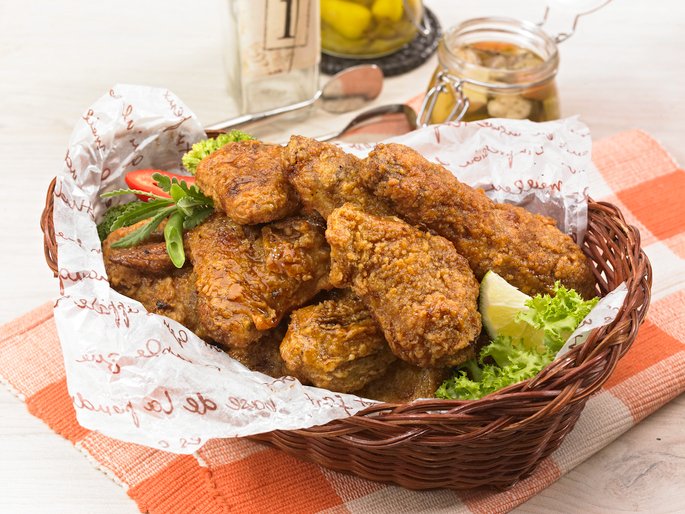
Bulgogi, Korean Recipe
Bulgogi is a classic Korean dish that is made with thinly sliced beef that is marinated in a sweet and savory sauce. The word “bulgogi” translates to “fire meat,” which refers to the traditional method of cooking the meat over an open flame. Bulgogi is known for its tender and flavorful meat that is perfect for grilling or pan-frying.
Ingredients
To make Bulgogi, you will need the following ingredients:
- Thinly sliced beef (such as sirloin or ribeye)
- Soy sauce
- Sesame oil
- Sugar
- Garlic
- Ginger
- Pear or apple
- Spring onions
- Sesame seeds
- Black pepper
Preparation
To prepare Bulgogi, start by marinating the beef in a mixture of soy sauce, sesame oil, sugar, garlic, ginger, grated pear or apple, spring onions, sesame seeds, and black pepper. Let the meat marinate for at least 30 minutes to allow the flavors to penetrate the meat. Cook the marinated beef over a grill or in a hot pan until it is cooked to your desired level of doneness. Serve the Bulgogi with steamed rice and accompanying side dishes.
Variations
Bulgogi can be customized with different cuts of meat and variations in the marinade to suit your taste preferences. Some popular variations include using pork or chicken instead of beef. You can also experiment with different seasonings such as adding gochujang or Korean chili flakes for a spicier flavor. Bulgogi is a versatile dish that allows you to get creative and experiment with different flavors and cooking methods.
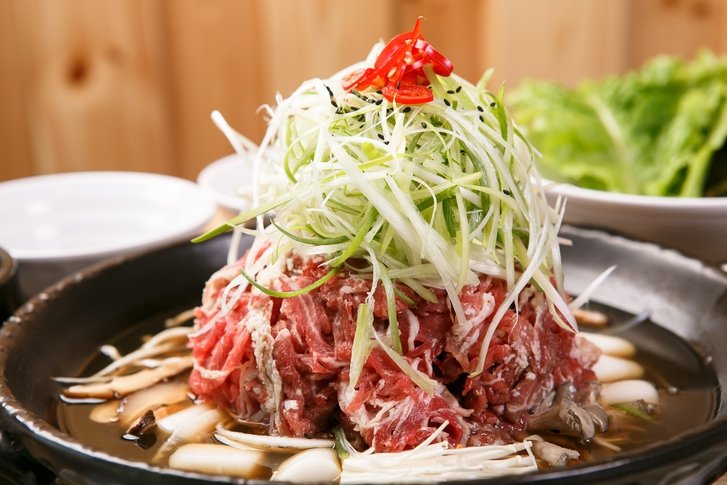
Dolsot Bibimbap, Korean Recipe
Dolsot Bibimbap is a variation of the classic Bibimbap that is served in a hot stone pot called a dolsot. The term “dolsot” translates to “stone pot,” and it refers to the traditional method of serving the Bibimbap in a heated stone bowl. Dolsot Bibimbap is known for its crispy rice crust that forms at the bottom of the pot, adding a textural element to the dish.
Ingredients
To make Dolsot Bibimbap, you will need the following ingredients:
- Steamed rice
- Assorted vegetables such as carrots, spinach, bean sprouts, and mushrooms
- Thinly sliced beef or pork
- Eggs
- Gochujang (Korean chili paste)
- Sesame oil
- Garlic
- Soy sauce
- Sugar
- Salt
- Cooking oil
Preparation
To prepare Dolsot Bibimbap, start by sautéing the vegetables and meat separately with garlic, soy sauce, and sesame oil. Cook them until they are tender and well seasoned. In a dolsot or heatproof stone pot, add a layer of steamed rice to the bottom. Arrange the cooked vegetables and meat on top of the rice in separate sections. Fry an egg and place it on top of the rice. Drizzle some gochujang sauce over the ingredients. Place the stone pot over high heat until the rice at the bottom forms a crispy crust. Mix everything together before eating.
Variations
Dolsot Bibimbap can be customized with different ingredients and flavors to suit your taste preferences. Some popular variations include using different types of rice such as brown rice or mixed grain rice. You can also experiment with different toppings and garnishes such as seaweed flakes, sesame seeds, or sliced cucumbers. Dolsot Bibimbap is a versatile dish that allows you to get creative and experiment with different textures and flavors.
Jjajangmyeon, Korean Recipe
Jjajangmyeon is a popular Korean-Chinese dish that is made with thick, hand-pulled noodles smothered in a savory black bean sauce. The dish originated in China but has become a staple in Korean cuisine. Jjajangmyeon is known for its rich, thick sauce and hearty flavors.
Ingredients
To make Jjajangmyeon, you will need the following ingredients:
- Thick noodles (such as udon or wheat noodles)
- Pork belly or beef
- Black bean paste
- Onion
- Zucchini
- Potatoes
- Cucumber
- Sugar
- Soy sauce
- Cooking oil
Preparation
To prepare Jjajangmyeon, start by boiling the noodles according to the package instructions. Drain and set aside. In a large pan or wok, heat some cooking oil and sauté the pork belly or beef until it is cooked through. Add the onion, zucchini, and potatoes to the pan and cook until they are tender. Stir in the black bean paste, sugar, and soy sauce, and cook for a few minutes until the sauce has thickened. Serve the sauce over the noodles and garnish with cucumber slices.
Variations
Jjajangmyeon can be customized with different ingredients and flavors to suit your taste preferences. Some popular variations include adding seafood such as squid or shrimp to the sauce. You can also experiment with different types of noodles such as sweet potato noodles or rice noodles. Jjajangmyeon is a versatile dish that allows you to get creative and experiment with different textures and flavors.
